Author Archive
March 16, 2017
New Mexico Gold Rush History
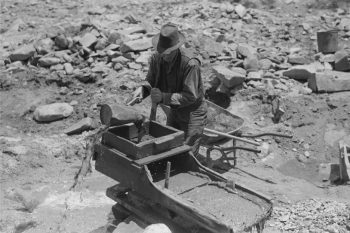 Compared to its neighboring state of Arizona, New Mexico has nowhere near the record of gold production. However, New Mexico gold mines have produced a good amount of gold in the past few centuries from both placer and lode deposits. During the earliest days of the New Mexico Gold Rush, the Apache tribes made it a little bit difficult for people to do their gold prospecting activities. Early Mexican settlers and Spanish explorers did find gold, but they had to overcome some challenges from the native inhabitants.
Compared to its neighboring state of Arizona, New Mexico has nowhere near the record of gold production. However, New Mexico gold mines have produced a good amount of gold in the past few centuries from both placer and lode deposits. During the earliest days of the New Mexico Gold Rush, the Apache tribes made it a little bit difficult for people to do their gold prospecting activities. Early Mexican settlers and Spanish explorers did find gold, but they had to overcome some challenges from the native inhabitants.
As soon as the whites settled the state in 1848, the real New Mexico Gold Rush happened. Plenty of gold has been found in placer, but the majority has come as byproduct of mining activities for other minerals. One of the first discoveries occurred in 1828 in Old Placers district. It was soon followed by the discovery of lode deposit. In 1877, gold was found at Rattlesnake and Wicks gulches; prior to 1904, total production reached $6,750,000 worth of gold.
In 2007, all gold productions from New Mexico combined made only 13,000 troy ounces (400 kg). This relatively small amount was a byproduct of copper mining in Grant County. One of the biggest challenges in New Mexico for gold prospecting is the lack of water; the state has a dry climate. Dry washers and metal detectors are the best tools to use for modern day prospectors, but don’t get your hopes too high yet. While it’s best to have a New Mexico gold map, some of the best places are the same old districts where gold was found in the past. You may want to try your luck at the following districts:
- Pinos Altos located a few miles north of Silver City
- Hillsboro District in the southwest part of New Mexico
- Old Placers located southwest of Santa Fe
- Elizabethtown Baldy District, especially along the west side of Mount Baldy
The New Mexico Gold Rush was not a major deal for the prospectors in the old days. It can mean two things: whether the state does not have gold or it hides plenty of it somewhere yet to be found. There is no way to tell unless you do your own exploration by covering more grounds. Gold panning can be fun as long as you don’t make it the only source of income; consider the activity a recreational one and you won’t be deeply disappointed at the end of the day. Please also understand that much of the lands in New Mexico are private property, Indian Reservations, and military reserves. Some areas are off limits or it takes specific permissions to access.
March 13, 2017
Nevada Gold Rush History And Mining Locations
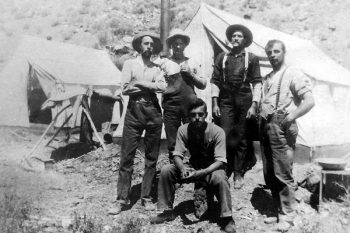 Large scale gold mining started with the California Gold Rush in 1848 but it only lasted for only about 7 years. The greatest modern day gold mining in the United States nowadays occurs in Nevada. In fact, Nevada is the leading state in terms of gold production and certainly one of the largest sources of gold in the world. In 2015, Nevada produced more than 166 tons of gold worth about $6.194 billion. It represented 78% of all gold produced across the United States. It is an impressive record especially for a state better known for its silver production in the 19th century, the Nevada Gold Rush is not just a story in the history book, it is real and happening still today.
Large scale gold mining started with the California Gold Rush in 1848 but it only lasted for only about 7 years. The greatest modern day gold mining in the United States nowadays occurs in Nevada. In fact, Nevada is the leading state in terms of gold production and certainly one of the largest sources of gold in the world. In 2015, Nevada produced more than 166 tons of gold worth about $6.194 billion. It represented 78% of all gold produced across the United States. It is an impressive record especially for a state better known for its silver production in the 19th century, the Nevada Gold Rush is not just a story in the history book, it is real and happening still today.
One of the first gold discoveries in the state happened near Gold Canyon. In 1961 the Newmont Mining Corporation found a large deposit of low grade gold, Nevada started to make its name into one of the richest states in the country. Even if you are not a commercial/professional miner, you still pretty much feel the excitement of the Nevada Gold Rush today. The vast public lands in the state offer opportunities for everyone to make a lot of money from gold. One of the best places for gold prospecting in Nevada is Humboldt County as the precious metal can be found throughout the county. In fact, many modern prospectors still work in the area. Other places include:
- Dutch Flats
- Rebel Creek
- Winnemucca Districts
- Varyville
- Paradise Valley
- Gold Run
- The Awakening
- Warm Spring Districts
Gold panning was not the best technique to extract gold during the Nevada Gold Rush. Instead of using a pan, hard rock mining prospectors choose to utilize the pick andshovel used in lode mining. Today, metal detectors are used to locate veins so chances are early prospectors missed a lot of good spots.
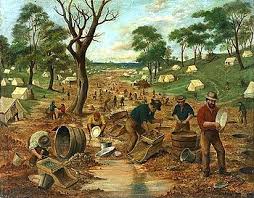 Nevada makes an ideal place for gold prospecting thanks to its wide sparsely-populated open area, but it is not without its downsides. Water can be hard to find in many places, and the climate is harsh most of the time. If you like extreme outdoor adventure, you might as well carry a metal detector in your bag. Gold is abundant in Nevada, so that odd-shaped rock that you kick out of your way may lead you to a multi-million dollar gold mine. Outdoor adventure in Nevada is challenging with all the mountain lions and snakes, so make sure you wear protective gear and use caution.
Nevada makes an ideal place for gold prospecting thanks to its wide sparsely-populated open area, but it is not without its downsides. Water can be hard to find in many places, and the climate is harsh most of the time. If you like extreme outdoor adventure, you might as well carry a metal detector in your bag. Gold is abundant in Nevada, so that odd-shaped rock that you kick out of your way may lead you to a multi-million dollar gold mine. Outdoor adventure in Nevada is challenging with all the mountain lions and snakes, so make sure you wear protective gear and use caution.
March 10, 2017
Working Montana Gold Rush Mines And History
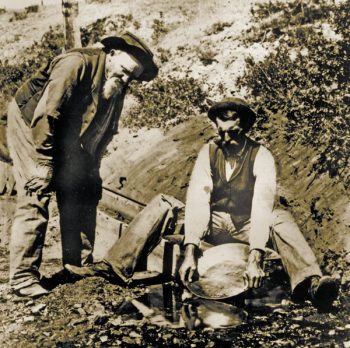 The first recorded gold discovery in Montana happened in 1852, but the actual Montana Gold Rush did not start until 10 years later when gold placers were found at Bannack. More gold deposit discoveries followed afterwards for examples at Virginia City in 1863, Helena and Butte at 1864, and Atlantic Cable Quartz Lode in 1867. Butte district was actually a copper mine, but it also produced 2.9 million ounces (or more than 90 tons) of gold in the 1990’s, most as byproduct of copper production.
The first recorded gold discovery in Montana happened in 1852, but the actual Montana Gold Rush did not start until 10 years later when gold placers were found at Bannack. More gold deposit discoveries followed afterwards for examples at Virginia City in 1863, Helena and Butte at 1864, and Atlantic Cable Quartz Lode in 1867. Butte district was actually a copper mine, but it also produced 2.9 million ounces (or more than 90 tons) of gold in the 1990’s, most as byproduct of copper production.
The Montana Gold Rush, although not as intensive as in the old days, is still happening now. There are still several active mines including Confederate Gulch and Browns Gulch placers. Three other mines including Stillwater, Lodestar, and East Boulder Project are for titanium productions but they have produced gold as well.
Since the first discovery more than 160 years ago, Montana has produced thousands of ounces of gold. Of course, it is not as plentiful as in several other states, but it might also mean that more deposits are still left to be found. Another good thing is that potential locations are owned by the American people and open for mineral explorations. Some people are still trying to find some left over gold nuggets in old mines and creeks with historical gold productions. In modern days, you can still feel the excitement of the Montana Gold Rush in the following locations:
- Rivers and creeks located near old towns of Virginia City and Bannack
- Missouri River located near Helena
- Confederate Gulch located east of the Missouri River (between Townsend and Helena)
- Eastern flank of Elkhorn Mountains
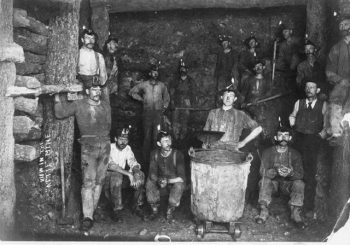
- North of Yellowstone National Park
- Cooke City (its entire area)
Considering Montana is a big state and the fact that it has historical gold discoveries, modern day gold prospecting still happens all around. The metal detector is an ideal tool for the job, because gold panning and dredging are too difficult to yield anything unless you are in a very good location. While a large portion of Montana is public land and open for mineral exploration, chances are you will not find very good spots that have a lot of gold. Many of the potentially easiest and richest locations have been claimed already. However, gold prospecting these days are more than just about trying to find the precious metals, most people actually do this to experience the outdoors. If you want to find gold, be sure to ask permission and respect the rights of the gold claim owners and you’ll be just fine.
March 6, 2017
Idaho Gold Rush History And Districts
In 1860 the Idaho Gold Rush began. It was all started with gold finding in Pierce, particularly at the juncture where Orofino Creek meets Canal Creek. The most popular gold-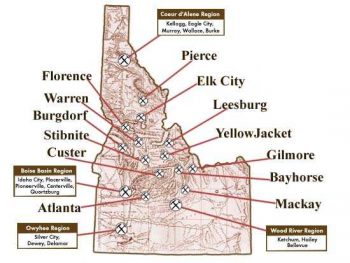 producing district in Idaho is Boise Basin County, which was discovered only two years after the Pierce event took place. It has produced nearly 3 million troy ounces (more than 90 tons) of gold mostly from placers. Besides the Boise Basin, there is also French-Creek Florence district in Idaho County which has produced about 1 million troy ounces (34 tons) of placer gold as well. The state also has The Silver City district in Owyhee County; it began producing in 1863 and has delivered more than 1 million troy ounces of gold, too. Another popular district is the Coeur d’Alene in Shoshone County; it is not as productive as the other district but still capable of producing 44,000 troy ounces of gold so far. Interestingly, the gold found in this district are mostly byproduct to silver mining.
producing district in Idaho is Boise Basin County, which was discovered only two years after the Pierce event took place. It has produced nearly 3 million troy ounces (more than 90 tons) of gold mostly from placers. Besides the Boise Basin, there is also French-Creek Florence district in Idaho County which has produced about 1 million troy ounces (34 tons) of placer gold as well. The state also has The Silver City district in Owyhee County; it began producing in 1863 and has delivered more than 1 million troy ounces of gold, too. Another popular district is the Coeur d’Alene in Shoshone County; it is not as productive as the other district but still capable of producing 44,000 troy ounces of gold so far. Interestingly, the gold found in this district are mostly byproduct to silver mining.
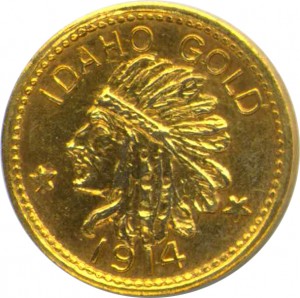 Although Boise Basin did not actually start the whole Idaho Gold Rush period, it has given the most amount of gold compared to other districts. One of the main reasons is that it is comprised of several gold mining towns including Centerville, Placerville, Idaho City, and Pioneerville. As a matter of fact, all the streams in the area have produced good amounts of gold. Within only few years after the first gold discovery in Boise Basin, the area had larger population than Portland, Oregon. The area is not known for its large gold nuggets, but only small fine picker-sized gold.
Although Boise Basin did not actually start the whole Idaho Gold Rush period, it has given the most amount of gold compared to other districts. One of the main reasons is that it is comprised of several gold mining towns including Centerville, Placerville, Idaho City, and Pioneerville. As a matter of fact, all the streams in the area have produced good amounts of gold. Within only few years after the first gold discovery in Boise Basin, the area had larger population than Portland, Oregon. The area is not known for its large gold nuggets, but only small fine picker-sized gold.
Unlike the California gold rush, you can still feel and experience Idaho Gold Rush until today as there are still active gold mines in the state. Almost all rivers and creeks in Central Idaho have some gold in them. More than half of the entire land areas of Idaho are public land managed by Bureau of Land Management and Forest Service. These areas are open for exploration and gold claims.
It is worth mentioning that gold in Idaho is found in remote areas. It means that gold prospecting in Idaho may require you to take a hike and walk through barely populated land. As long as you don’t mind backcountry travelling, you may get lucky and find the precious metals with little efforts of gold panning in some rivers on your path. You may need to travel for days until you arrive at potentially productive river, so be prepared and carry your outdoor gear including spare tires, food, and maybe a tent.
March 5, 2017
The Colorado Gold Rush From 1807
Gold deposits have been found throughout the state of Colorado. The first discovery happened in the present-day Park County in 1807. It was Zebulon Pike who reported (or 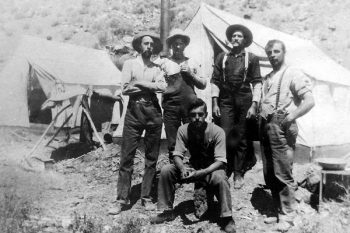 heard a report) about gold finding in that area, but it did not set off the gold rush in the state. The real Colorado Gold Rush began more than five decades later, specifically in 1858 when rich deposits of gold in Pike’s Peak were discovered. Gold mining has been part of Colorado since then. Records of major gold production in Colorado from many different areas are as follows:
heard a report) about gold finding in that area, but it did not set off the gold rush in the state. The real Colorado Gold Rush began more than five decades later, specifically in 1858 when rich deposits of gold in Pike’s Peak were discovered. Gold mining has been part of Colorado since then. Records of major gold production in Colorado from many different areas are as follows:
- 1892: 270,000 ounces
- 1895: 660,000 ounces
- 1900: 1,400,000 ounces (it is still the highest to date)
- 1916: over a million ounces
- 1922: 300,000 ounces
- 1928: 200,000 ounces
- 1936: by this time, Gold Reserve Act was active and it helped increase production to 370,000 ounces
- 1942: 380,000 ounces, but gold mining was stopped due to the war
- 1947: gold mining restarted after the war and produced 168,000 ounces
- 1960: 66,000 ounces
- 1967: 22,000 ounces
- 1972: 37,000 ounces
- 1978: 72,000 ounces
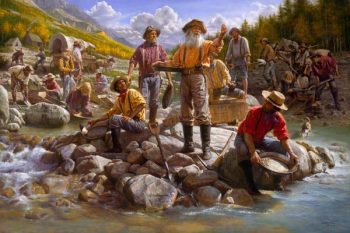 There is only one active gold mine in Colorado today, the Cripple Creek & Victor Gold Mine located near the Colorado Springs. It is owned by Newmont Mining Corporations and it produced 211,000 troy ounces of gold in 2014. The mine produced 350,000 troy ounces (about 11,000 kg) of gold last year. Based on the aforementioned statistics, Colorado Gold Rush is actually still happening at present time. It was not just a brief period of the state’s history, but is a part of Colorado lifestyle until now.
There is only one active gold mine in Colorado today, the Cripple Creek & Victor Gold Mine located near the Colorado Springs. It is owned by Newmont Mining Corporations and it produced 211,000 troy ounces of gold in 2014. The mine produced 350,000 troy ounces (about 11,000 kg) of gold last year. Based on the aforementioned statistics, Colorado Gold Rush is actually still happening at present time. It was not just a brief period of the state’s history, but is a part of Colorado lifestyle until now.
For modern day gold prospectors, the search for gold in old abandoned gold mines or places where historical findings happened can be more fruitful than starting a whole new exploration. Much of the low-grade gold requires extra treatment and is only financially viable by large companies.
You probably were not there when the Colorado Gold Rush was at its peak, but some believe that the state has more gold than it has actually given to prospectors. For those who love hiking and outdoor adventures, Colorado offers just the ideal topography characteristics; it has rugged terrains filled with rivers, streams, and hillsides to test your endurance and determination to find some pieces of precious golden metals. Even if you don’t find the gold, at least you get the chance to explore the rarely-visited areas and enjoy the nature.
March 2, 2017
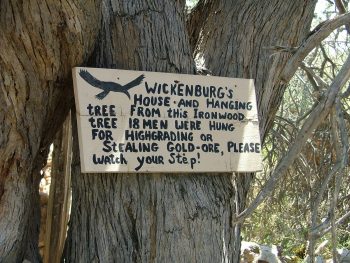 The Arizona Gold Rush: The first gold mining in Arizona took place in 1774. It was the time when Manuel Lopez (a Spanish priest) directed Papago Indians to wash gold from gravel on the flanks of Quijotoa Mountains. Afterwards the Arizona Gold Rush continued until 1849 when Mexican miners were lured away by the California Gold Rush.
The Arizona Gold Rush: The first gold mining in Arizona took place in 1774. It was the time when Manuel Lopez (a Spanish priest) directed Papago Indians to wash gold from gravel on the flanks of Quijotoa Mountains. Afterwards the Arizona Gold Rush continued until 1849 when Mexican miners were lured away by the California Gold Rush.
To date, Arizona has produced more than 498 tons (16 million troy ounces) of gold. Stand-alone active gold mining infrastructures are no longer active now; most gold found today are simply byproduct of copper mining. In fact, the last gold mine to operate in the state was shut down in 1998. However, some prospectors still see Arizona as potentially rich grounds until today.
For prospectors, Arizona’s mild winter climate and arid environment make an ideal atmosphere for gold mining. While water is not always easily available, they can always use different kinds of equipment to work around such condition. Rather than using the more traditional water-dependent equipment to separate gold nuggets from gravels, miners use dry-washers. Regulated airflow can blow off lighter materials and allow the gold to settle. Metal detectors are helpful as well.
Unlike in Nevada, the modern day Arizona Gold Rush is practically non-existent. Prospecting is getting more difficult as many of the mining locations have already been claimed. There is still probably a lot of gold in Arizona, but there are many people looking for it; when demand surpasses supply, scarcity happens even with a large volume of stock. Apart from gold, Arizona is home to plenty of different precious gems such as: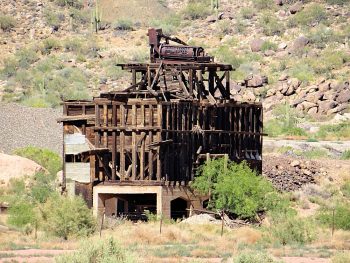
- Jasper: the most abundant gemstones in Arizona. It can be found in streams and ground surface as well especially in areas with little-to-no vegetation.
- Peridot: ancient gemstone used as jewelry pieces by Pharaoh’s Egypt. Arizona has one of the most prolific Peridot-producing sites in the world.
There is no more Arizona Gold Rush, but you can still feel the same experience as those who actually did play a part in the historical days of the gold mining industry of the state by engaging in recreational gold panning. Gold prospecting is possible indeed, but you need to do proper research to avoid lurking at someone else’s gold claim. There are at least two places where you can enjoy an outdoor adventure and learn how it was like to look for fortunes during the gold rush:
- Lake Pleasant Park: only for gold panning.
- Lynx Creek Mineral Withdrawal Area: gold panning and metal detecting are allowed.
February 13, 2017
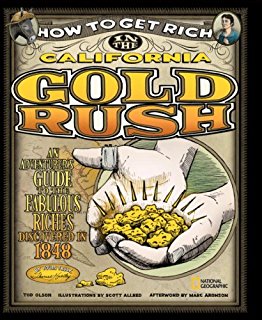 California Gold Rush Yesterday And Today: When it comes to the Gold Rush, there is no better place in the world that can be associated with the term than California. While many other areas in the country had their own gold rush history, the California Gold Rush was the one everybody knows and talks about. The discovery of gold at Coloma on the American River by James W. Marshall in the 1848 drove about 300,000 people from the eastern half of the United States and abroad. All looking to strike it rich.
California Gold Rush Yesterday And Today: When it comes to the Gold Rush, there is no better place in the world that can be associated with the term than California. While many other areas in the country had their own gold rush history, the California Gold Rush was the one everybody knows and talks about. The discovery of gold at Coloma on the American River by James W. Marshall in the 1848 drove about 300,000 people from the eastern half of the United States and abroad. All looking to strike it rich.
Gold has earned California an international reputation as the golden state. Generations after generations of people were flocking to the state, trying to pursue happiness, wealth, and fame. But not every one actually wanted to find gold; these people were all from different backgrounds and worked in different fields such as oil drillers, farmers, movie makers, builders, and more. While the California Gold Rush literally meant the rush for gold, it could be interpreted as the earliest period of economic boom time in the state. It was also associated with a new beginning, hope for better future, and seemingly endless opportunities to find fortunes.
Mining continued for many decades since the discovery of gold by James W. Marshall; even until today, there is still gold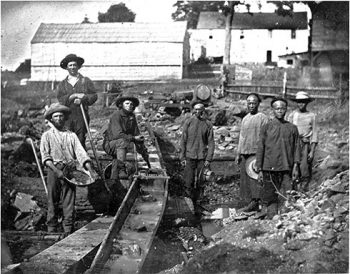 mining activity in the state, both commercial and recreational. However, everything is now on much smaller scale. For the vast majority of people, including locals and tourists, gold mining is simply an outdoor activity for fun. There is still a chance to get a big chunk of gold indeed, but the primary purpose of modern gold panning is to get outdoors, learn about history, or try the same experience as the first prospectors did.
mining activity in the state, both commercial and recreational. However, everything is now on much smaller scale. For the vast majority of people, including locals and tourists, gold mining is simply an outdoor activity for fun. There is still a chance to get a big chunk of gold indeed, but the primary purpose of modern gold panning is to get outdoors, learn about history, or try the same experience as the first prospectors did.
Recreational gold panning and prospecting is generally a simple effort because the techniques are the same as traditional methods. Heavy machines are not necessary; if you want to learn about the California gold rush and spend times outdoors with family recreational gold prospecting can be a lot of fun, but little fortune. Gold panning is the simplest way to extract gold from the land as it only requires a pan and some field tools such as a shovel and pick. You don’t need a license or permit to enjoy recreational gold panning; here are some of the best places in California where you can do a little gold prospecting and gold panning for fun:
- Butte Recreation Area
- Columbia State Historic Park
- Keyesville Recreational Mining Area
- Malakoff Diggins State Historic Park
- Marshall Gold Discovery State Historic Park
- Merced River
- South Yuba River State Park
- Swasey Recreation Area
- Trinity River
- Auburn State Recreation Area
« Previous Page
 Compared to its neighboring state of Arizona, New Mexico has nowhere near the record of gold production. However, New Mexico gold mines have produced a good amount of gold in the past few centuries from both placer and lode deposits. During the earliest days of the New Mexico Gold Rush, the Apache tribes made it a little bit difficult for people to do their gold prospecting activities. Early Mexican settlers and Spanish explorers did find gold, but they had to overcome some challenges from the native inhabitants.
Compared to its neighboring state of Arizona, New Mexico has nowhere near the record of gold production. However, New Mexico gold mines have produced a good amount of gold in the past few centuries from both placer and lode deposits. During the earliest days of the New Mexico Gold Rush, the Apache tribes made it a little bit difficult for people to do their gold prospecting activities. Early Mexican settlers and Spanish explorers did find gold, but they had to overcome some challenges from the native inhabitants.
 Large scale
Large scale  Nevada makes an ideal place for gold prospecting thanks to its wide sparsely-populated open area, but it is not without its downsides. Water can be hard to find in many places, and the climate is harsh most of the time. If you like extreme outdoor adventure, you might as well carry a metal detector in your bag. Gold is abundant in Nevada, so that odd-shaped rock that you kick out of your way may lead you to a multi-million dollar
Nevada makes an ideal place for gold prospecting thanks to its wide sparsely-populated open area, but it is not without its downsides. Water can be hard to find in many places, and the climate is harsh most of the time. If you like extreme outdoor adventure, you might as well carry a metal detector in your bag. Gold is abundant in Nevada, so that odd-shaped rock that you kick out of your way may lead you to a multi-million dollar  The first recorded gold discovery in Montana happened in 1852, but the actual Montana Gold Rush did not start until 10 years later when gold placers were found at Bannack. More gold deposit discoveries followed afterwards for examples at Virginia City in 1863, Helena and Butte at 1864, and Atlantic Cable Quartz Lode in 1867. Butte district was actually a copper mine, but it also produced 2.9 million ounces (or more than 90 tons) of gold in the 1990’s, most as byproduct of copper production.
The first recorded gold discovery in Montana happened in 1852, but the actual Montana Gold Rush did not start until 10 years later when gold placers were found at Bannack. More gold deposit discoveries followed afterwards for examples at Virginia City in 1863, Helena and Butte at 1864, and Atlantic Cable Quartz Lode in 1867. Butte district was actually a copper mine, but it also produced 2.9 million ounces (or more than 90 tons) of gold in the 1990’s, most as byproduct of copper production.
 producing district in Idaho is Boise Basin County, which was discovered only two years after the Pierce event took place. It has produced nearly 3 million troy ounces (more than 90 tons) of gold mostly from placers. Besides the Boise Basin, there is also French-Creek Florence district in Idaho County which has produced about 1 million troy ounces (34 tons) of
producing district in Idaho is Boise Basin County, which was discovered only two years after the Pierce event took place. It has produced nearly 3 million troy ounces (more than 90 tons) of gold mostly from placers. Besides the Boise Basin, there is also French-Creek Florence district in Idaho County which has produced about 1 million troy ounces (34 tons) of  Although Boise Basin did not actually start the whole Idaho Gold Rush period, it has given the most amount of gold compared to other districts. One of the main reasons is that it is comprised of several
Although Boise Basin did not actually start the whole Idaho Gold Rush period, it has given the most amount of gold compared to other districts. One of the main reasons is that it is comprised of several  heard a report) about gold finding in that area, but it did not set off the gold rush in the state. The real Colorado Gold Rush began more than five decades later, specifically in 1858 when rich deposits of gold in Pike’s Peak were discovered.
heard a report) about gold finding in that area, but it did not set off the gold rush in the state. The real Colorado Gold Rush began more than five decades later, specifically in 1858 when rich deposits of gold in Pike’s Peak were discovered.  There is only one active gold mine in Colorado today, the Cripple Creek & Victor Gold Mine located near the Colorado Springs. It is owned by Newmont Mining Corporations and it produced 211,000 troy ounces of gold in 2014. The mine produced 350,000 troy ounces (about 11,000 kg) of gold last year. Based on the aforementioned statistics, Colorado Gold Rush is actually still happening at present time. It was not just a brief period of the state’s history, but is a part of Colorado lifestyle until now.
There is only one active gold mine in Colorado today, the Cripple Creek & Victor Gold Mine located near the Colorado Springs. It is owned by Newmont Mining Corporations and it produced 211,000 troy ounces of gold in 2014. The mine produced 350,000 troy ounces (about 11,000 kg) of gold last year. Based on the aforementioned statistics, Colorado Gold Rush is actually still happening at present time. It was not just a brief period of the state’s history, but is a part of Colorado lifestyle until now. The Arizona Gold Rush: The first
The Arizona Gold Rush: The first 
 California Gold Rush Yesterday And Today: When it comes to the
California Gold Rush Yesterday And Today: When it comes to the  mining activity in the state, both commercial and recreational. However, everything is now on much smaller scale. For the vast majority of people, including locals and tourists, gold mining is simply an outdoor activity for fun. There is still a chance to get a big chunk of gold indeed, but the primary purpose of modern
mining activity in the state, both commercial and recreational. However, everything is now on much smaller scale. For the vast majority of people, including locals and tourists, gold mining is simply an outdoor activity for fun. There is still a chance to get a big chunk of gold indeed, but the primary purpose of modern 

